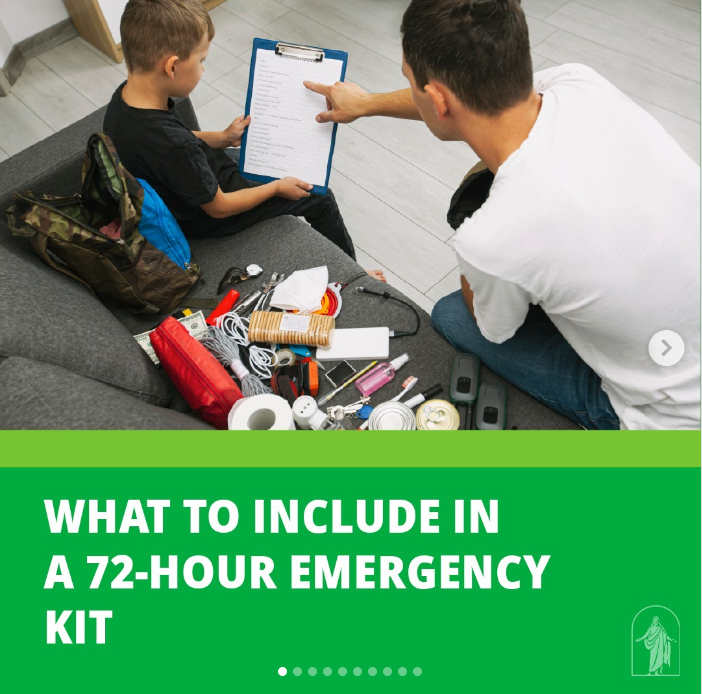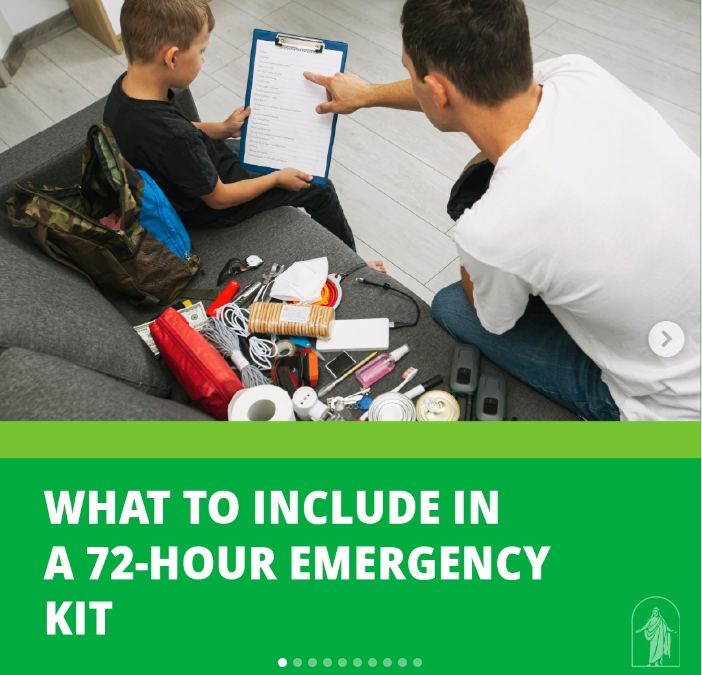
Have you ever wondered where to begin with emergency preparation? A 72-hour kit is a great place to start! You can tailor the contents to your situation and the amount of space you have for storage.
The first 72 hours after an emergency or disaster are the most important hours to prepare for. Keeping an updated 72-hour kit will help you reduce stress in a time of need.
Why make an emergency kit?
An emergency kit can help you be prepared if you need to leave your home quickly for a brief period. Think through these ideas from caring.ChurchofJesusChrist.org as you put together a portable supply kit.
What to include in a 72-hour emergency kit
- Light and shelter. In the event of a disaster, you may need light and shelter for your family. These items may include a tent or tarp and duct tape, sleeping bags or warm blankets, flashlights or lanterns, and extra batteries.
- Food and water. It is recommended that you have one gallon of water per person per day for several days, for drinking and sanitation. Include a several-day supply of non-perishable food items.
- Medical supplies. These may include prescription medications, over-the-counter medications, and first-aid supplies, such as bandages, ointments, gauze pads, and tweezers.
- Personal hygiene.This may include toothbrushes and toothpaste, soap, baby wipes, hand sanitizer, feminine supplies, and heavy-duty plastic garbage bags and ties for waste.
- Communication. These items may include cell phones with chargers and backup batteries, family meeting place details, and a list of emergency contacts.
- Cash and critical documents. Keep cash and copies of critical family documents in your emergency kit, such as insurance policies, identification (license and passport), and bank account records.
- Clothing. Include a complete change of clothing and sturdy shoes for each family member. This should be appropriate for your climate. Check this clothing regularly as children grow out of clothes quickly.
- Other needs unique to your situation. This could include entertainment or comfort items for children, formula for infants, or extra contacts or eye glasses.
Once you have created your emergency kit, be sure to check it regularly. Children grow out of clothes, food expires, and plans change.
Learn about Church preparedness resources.


What do we put these items in? Are we putting these in a vehicle? Or are these items to have on hand at home?
I think a large suitcase with wheels is best because you can have it at home or grab it and leave.
I also put a note card on the handle of suitcase to remind me of any items I might want to take that are too large for the suitcase.